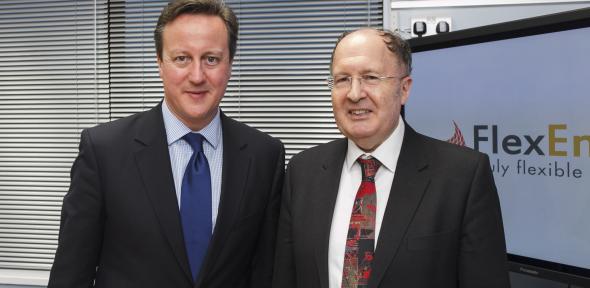
source: www.cabume.co.uk
Think about it – what was the last advert you saw that you really remember or which made you take action? The likelihood is that nothing comes immediately to mind. This is ironic as we are now surrounded by more and more ads, whether on the internet, TV or billboards. And they should be increasingly better targeted given that advertisers can see our browsing history, previous searches and even what we Like on Facebook.
Why don’t we remember ads? I think there are three reasons. Firstly, we’re getting better at blanking them out ourselves. Our brains are struggling to cope with the huge amount of information around us, and are therefore becoming more ruthless and ignoring things that aren’t relevant.
Secondly, as well as giving us greater opportunities to see ads, technology is also helping us to skip them. Most of us fast forward through the ads on recorded programmes, and given that more TV is no longer watched live (or on a TV), we can save time by avoiding commercial breaks. Even if you begin watching a recording of a programme on ITV 15 minutes after it starts, you’ll catch up by the end, without missing anything but the ads. Websites are also waking up to the idea that you can offer a premium, ad free product to increase revenues. YouTube is looking at subscription model that means you don’t have to see any ads on the site, for example.
Finally, most ads aren’t actually that interesting anymore. Big budget TV ads still exist, but the vast majority are much more basic and programmatic – you do a search for a toaster, and small, mostly text-based ads then follow your round the internet for a week, appearing on every page you visit for example. The creativity is more in the algorithm that understands your intent, finds a corresponding ad and then keeps tracking you from site to site. It would be physically impossible for the advertiser to create hundreds of creative ads telling you about how their toaster will change your life – there simply isn’t the time or space to do it.
I’m sure there are wonderful long form TV ads out there, but apart from the Christmas campaigns (which have become part of the festive experience) I’m not watching them, and I don’t know who else is either. There don’t appear to be ads that tell your friends about, like the Tango, Guinness or Levis campaigns of the 1980s and 1990s. Too many TV or billboard ads are generic or ‘good enough’ in the eyes of the client, rather than pushing the boundaries. Targeting is replacing creativity as the key factor in success, so what does this mean for the advertising industry?
It could mean the end of ads as we know it. Brands are looking for different ways to engage with customers, so are putting their money into sponsorship of programmes, sports and events, content marketing and campaigns on social media. However swapping the TV ads you’ve always done for a Facebook or YouTube-based programme requires a leap of faith from marketing directors and ad planners alike. At the moment many have added the internet to their campaigns, for example sharing their ads on their own site, Facebook and YouTube and using cut down versions for internet advertising.
However I think that there’s going to be a moment when the advertising industry becomes ‘digital first’ and the swashbuckling creatives and Don Drapers will be replaced by data scientists and content marketers who can use technology to understand and reach audiences, as opposed to untargeted TV ads that may win prizes for creativity but don’t deliver ROI. In many ways this will be a shame, but shows that whatever industry you are in, digital can and will disrupt everything you do.









 Abcam
Abcam Cambridge and Peterborough’s economic development body has secured an additional £38 million of investment to support economic growth in area, taking the total raised from the UK government’s Growth Deal to over £100 million.
Cambridge and Peterborough’s economic development body has secured an additional £38 million of investment to support economic growth in area, taking the total raised from the UK government’s Growth Deal to over £100 million.